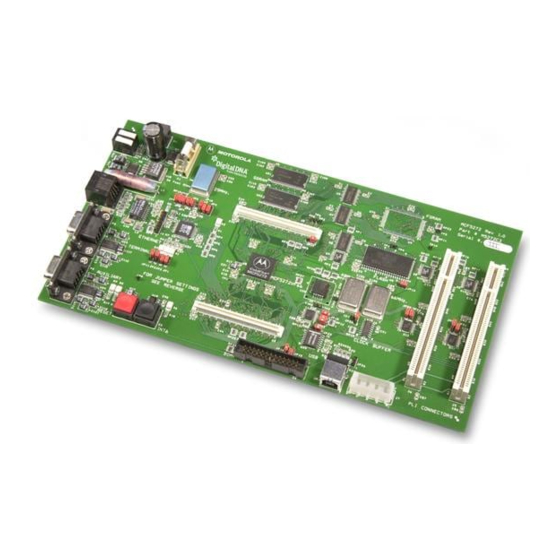
NXP Semiconductors MCF5272 ColdFire Manuals
Manuals and User Guides for NXP Semiconductors MCF5272 ColdFire. We have 1 NXP Semiconductors MCF5272 ColdFire manual available for free PDF download: User Manual
NXP Semiconductors MCF5272 ColdFire User Manual (545 pages)
Brand: NXP Semiconductors
|
Category: Computer Hardware
|
Size: 5 MB
Table of Contents
-
Number
14 -
Chapter 1
65-
UART Module66
-
Timer Module67
-
-
-
SRAM Overview104
-
ROM Overview107
-
-
Overview119
-
PSTCLK Timing120
-
-
CPU Halt134
-
-
-
BDM Command Set137
-
-
-
-
Features161
-
-
-
-
Overview191
-
SDRAM Registers196
-
Performance200
-
SDRAM Interface204
-
-
-
Overview219
-
Features219
-
-
Module Operation219
-
-
CAM Interface224
-
-
Reception Errors227
-
-
-
-
Introduction259
-
Module Operation260
-
-
Clock Generator262
-
-
-
USB Memory Map265
-
-
-
-
-
-
Endpoint Fifos288
-
Registers288
-
-
-
Data Flow290
-
IN Endpoints291
-
OUT Endpoints291
-
IN Endpoints292
-
OUT Endpoints292
-
Line Interface294
-
-
-
Introduction297
-
GCI/IDL Block299
-
-
Clock Synthesis307
-
-
PLIC Registers311
-
-
-
-
Overview339
-
Features339
-
Operation341
-
Qspi Ram342
-
QSPI RAM Model343
-
Receive RAM343
-
Command RAM344
-
Transmit RAM344
-
-
Transfer Delays345
-
Transfer Length346
-
Data Transfer346
-
-
SPI Modes Timing349
-
-
-
Overview361
-
-
Operation379
-
-
Receiver384
-
-
Receiver Timing384
-
Transmitter FIFO385
-
Receiver FIFO385
-
Looping Modes386
-
Multidrop Mode388
-
Remote Loop-Back388
-
-
Bus Operation389
-
Programming390
-
-
-
-
Overview395
-
-
-
Signal List413
-
SDRAM Controller429
-
-
Read/Write (R/W)431
-
Hi-Z432
-
Bypass432
-
-
-
-
Features449
-
-
Bus Sizing452
-
-
Interrupt Cycles467
-
20.10 Bus Errors467
-
-
-
Overview475
-
TAP Controller477
-
Restrictions482
-
Bypass Register482
-
-
-
Pinout483
-
Maximum Ratings485
-
IDL Slave Timing509
-
QSPI Timing515
-
PWM Timing516
-
-
Advertisement
Advertisement
Related Products
- NXP Semiconductors MCIMX8M-AUD
- NXP Semiconductors MCU-Link Pro
- NXP Semiconductors MCIMX7SABRE
- NXP Semiconductors MCUXpresso IDE MQX RTOS
- NXP Semiconductors MCIMX93-EVKCM
- NXP Semiconductors MCX-N5 EVK Series
- NXP Semiconductors MCX-MCXN546-EVK
- NXP Semiconductors MCX-MCXN547-EVK
- NXP Semiconductors MCXN546VDFT
- NXP Semiconductors MCXN546VNLT